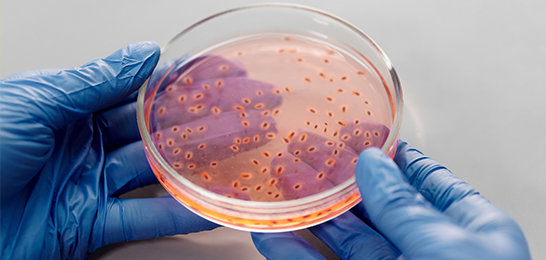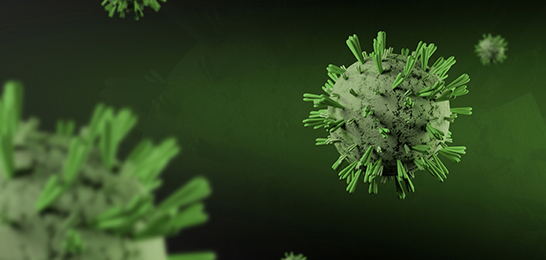Recombinant Human Epidermal Growth Factor Specifications
Product Name
| Recombinant Human Epidermal Growth Factor
|
Species
| Human
|
Source
| Pichia pastoris
|
Appearances
| White or off-white lyophilized powder
|
Molecular weight
| 6.0kD±0.6 kD
|
Purity
| ≥95%(SDS-PAGE) ≥95%(RP-HPLC)
|
Endotoxin
| < 0.2 EU/µg
|
Active
| ≥1.2×106U/mg pro |
Solubility
| Good solubility in water, buffer, and medium
|
Storage Conditions
| -15℃ below, protected from light, sealed
|
The data should be subject to test report of products.
Recombinant EGF Application
Recombinant Human Epidermal Growth Factor (EGF) is a protein that has a wide range of applications in medical research and biotechnology. It is a naturally occurring protein that is essential for the normal development and maintenance of healthy skin cells. Recombinant Human EGF has been used in a variety of clinical applications, including wound healing, tissue regeneration, and skin rejuvenation.
Recombinant EGF can be used to stimulate cell growth and repair, and has been shown to promote the formation of new blood vessels, reduce inflammation, and increase the rate of wound healing. In addition, Recombinant Human EGF Protein has been used to stimulate the growth of skin tissues, such as hair follicles, collagen, and keratinocytes, and to promote the healing of traumatic wounds. Recombinant EGF is also being studied for its potential to treat a range of skin diseases and disorders, such as psoriasis and atopic dermatitis.
Recombinant Human EGF Recommended Method
Recombinant Human EGF (Epidermal Growth Factor) is a protein found in the human body that has been genetically engineered for research and therapeutic use. It has been used for a variety of applications, such as tissue engineering, regenerative medicine, and drug delivery systems. The recommended method for producing EGF Human Recombinant is through the use of bacteria or yeast as a host organism. These organisms are transformed with a recombinant DNA construct that contains the gene encoding for EGF.
The Recombinant EGF protein is then expressed and purified from the host organism. This method is advantageous because it can produce large amounts of the Recombinant Human EGF Protein in a short amount of time, while still maintaining its structure and function. Additionally, this method can be used to produce EGF Human Recombinant in a variety of different forms, such as monomeric or dimeric, to meet the needs of a particular application.

EGF Epidermal Growth Factor Transport and Storage Stability
Human Recombinant EGF (Epidermal Growth Factor) is a crucial protein for the growth and maintenance of healthy skin cells. It is produced in a recombinant form, meaning it has been artificially created in a laboratory using genetic engineering. It has been used in a variety of skin care products to help promote cell regeneration and healing. The transport and storage stability of Recombinant Epidermal Growth Factor is important in order to ensure that the product is able to be used effectively and safely. To ensure the stability of recombinant human epidermal growth factor, it is important to store it in a cool and dry environment, away from direct sunlight or extreme temperatures.
Additionally, the factor recombinant epidermal growth should be kept in a sealed container, such as a syringe or bottle, to prevent it from coming into contact with contaminants or degrading over time. Proper storage and transport of Human Recombinant EGF is essential for its efficacy, and should be taken into consideration when using the product.
Characterization of Recombinant Human EGF
Recombinant Human EGF (Epidermal Growth Factor) is a protein derived from mammalian cells. It is a single-chain, dimeric glycoprotein consisting of two disulfide-linked 24 kDa subunits, each containing 53 amino acid residues. This protein is critical for the regulation of cell growth, proliferation, and differentiation. It binds to the EGF receptor (EGFR) and activates downstream signaling pathways that promote cellular proliferation and survival.
In addition, it plays an important role in wound healing, tissue repair and angiogenesis. The Recombinant EGF has been used in a number of clinical applications to treat various diseases such as cancer, burns, and ulcers. It has also been used to enhance skin rejuvenation and to promote wound healing. Recombinant Human EGF has been found to be an effective therapeutic agent for a wide range of diseases.
Notice and Disclaimer for EGF Human Recombinant
This Notice and Disclaimer applies to the use of Recombinant Human EGF (Recombinant Epidermal Growth Factor, rhEGF) and other related Recombinant Human Epidermal Growth Factors.
It is the user's responsibility to familiarize themselves with safe handling procedures, and to use and handle the product with care and in compliance with laws, regulations, and ordinances. The user must take the necessary precautions to ensure that the product is not used in violation of any applicable laws, regulations, or ordinances.
The user agrees to hold harmless and indemnify Recombinant Human EGF, its employees, and its agents from any liability arising out of or related to the use of the product. EGF Human Recombinant disclaims all warranties, expressed or implied, including any implied warranties of merchantability or fitness for a particular purpose.
In no event shall EGF Human Recombinant be liable for any damages, losses, or costs, including but not limited to, direct, indirect, or consequential damages, or any punitive damages, arising from or related to the use of the product.
The information provided herein is for general informational purposes only and is not intended to be a substitute for professional medical advice, diagnosis, or treatment.
EGF Human Recombinant shall not be held liable for any use of the product in an improper manner. By using this product, the user acknowledges that they have read and understood this Notice and Disclaimer and agree to be bound by its terms.








